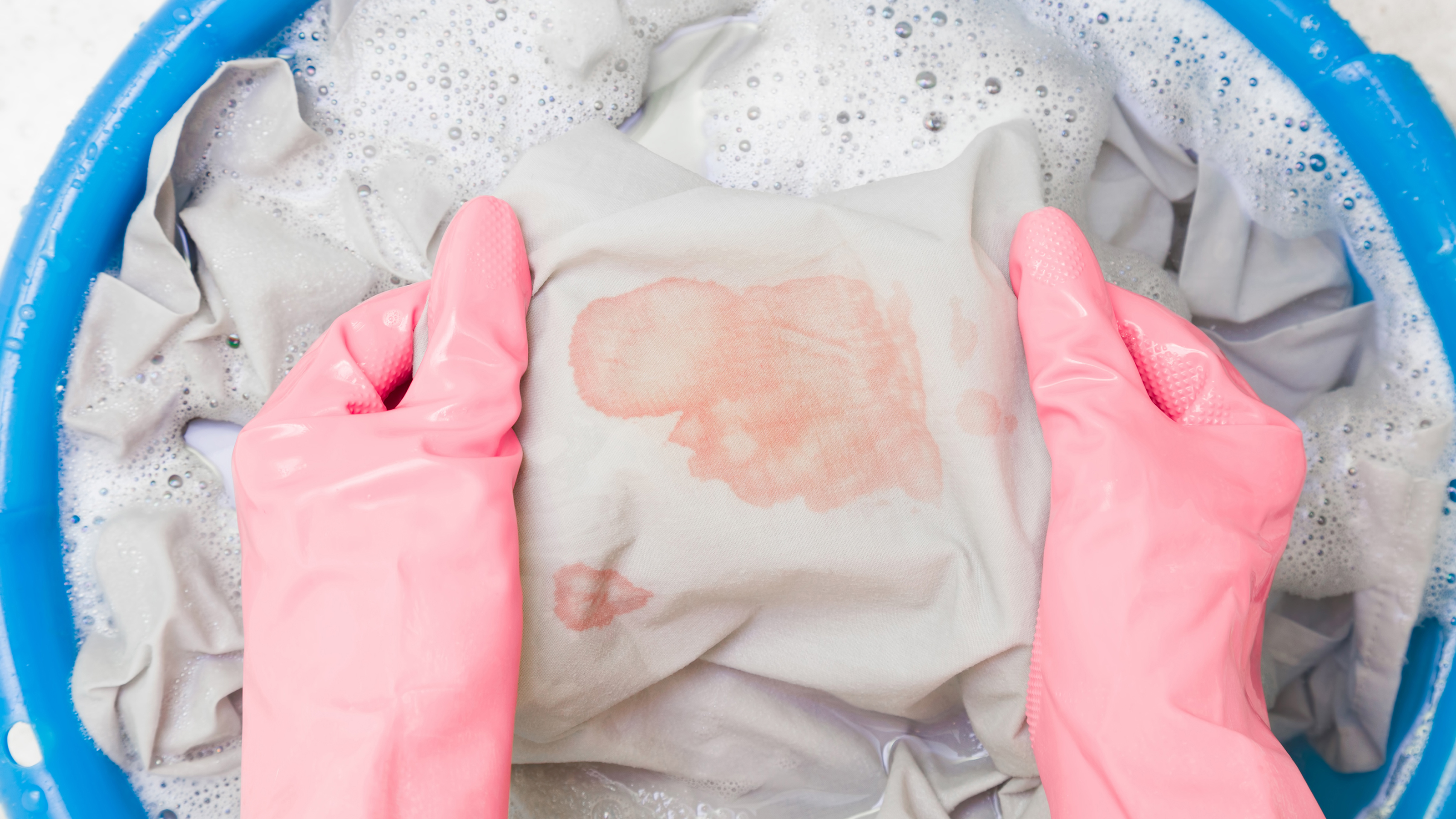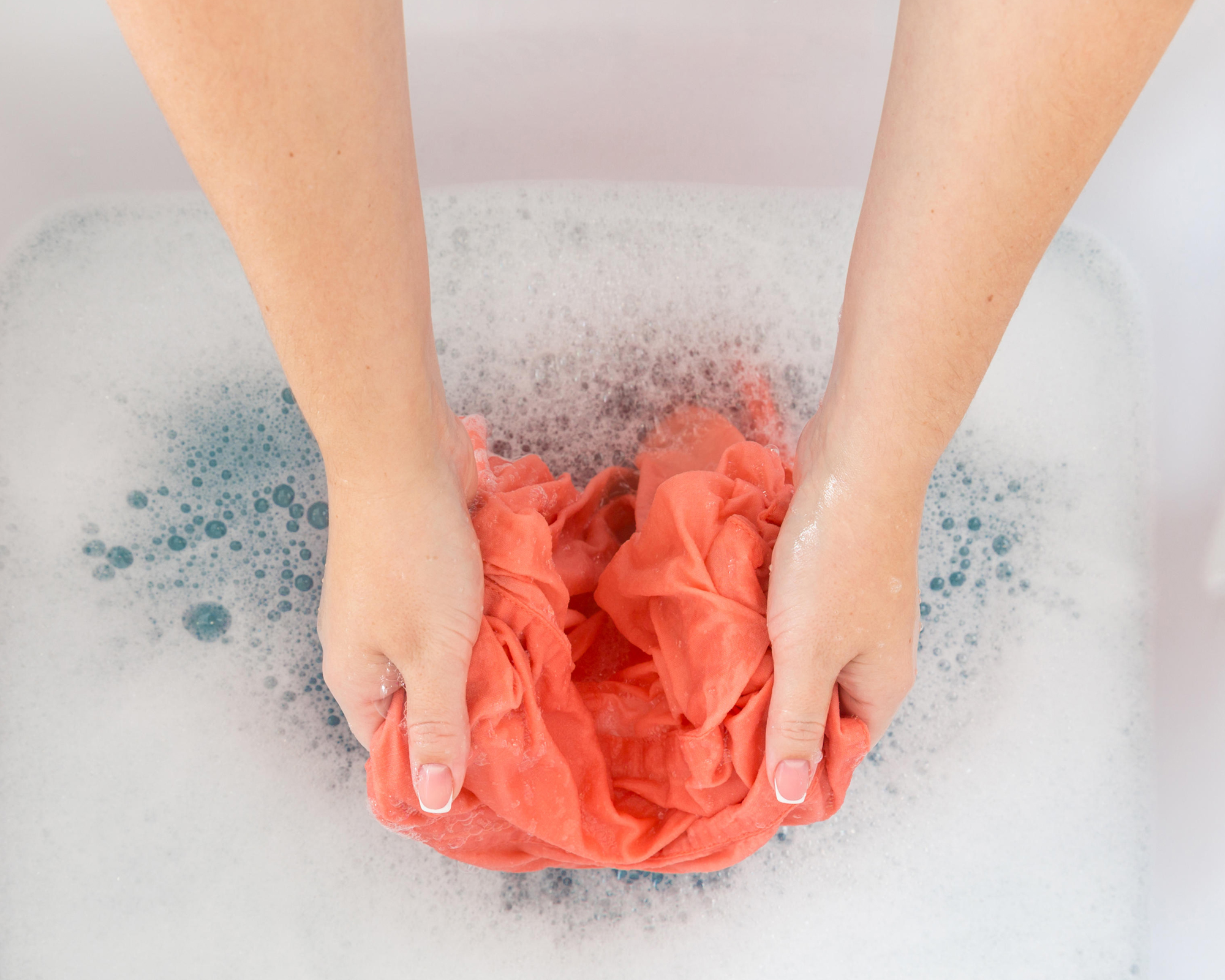How to get blood out of clothes – remove fresh and old stains successfully
Learn how to get out blood of clothes, whether the blood stain is fresh or dried.

If you need to know how to get blood out of clothes, you need to act fast. The longer a blood stain is on your clothes, the harder it will be to remove. Blood stains on clothes can be notoriously difficult to remove, especially if the stain is large and the fabric is absorbent and light-colored.
Fear not, though. Blood stains can be removed completely from clothes in most cases. Learning how to get blood stains out of clothes is all about knowing which stain removing agents really work for the specific stain type you're dealing with, and the correct pre-washing stain removal technique. Understanding these two things will helo you get rid of those blood stains for good.
How to get out blood from clothes: the importance of cold water
If you've just noticed a blood stain – say, you've had an accident and your sleeve cuff is soaked in blood – and you have nothing at all handy, just get your clothing item to a source of cold water as soon as possible. The water must be cold – don't ever try to remove blood stains with hot water. Blood is an organic substance that contains protein; the hot water will just cook the protein (gruesome but true), making the stain permanent.
If you are using detergents, lukewarm water is okay to use, but properly cold water is always better, as cold as your hands can stand. To remove a blood stain using just cold water, first run the garment under the tap until all of the surface blood has been removed and the water runs clear.
You'll know if you often have to get stains out of clothes – thanks kids – that there is usually some elbow grease involved. Rub the stained area under the running tap with your hands, mechanically removing the stain. You'll have to be careful if the fabric is silk, and you shouldn't do any rubbing at all if your garment is made from cashmere or wool (go straight in with a gentle laundry cycle in this case). Cotton or synthetics, on the other hand, should respond well to stain removal by hand.

How to get out blood from clothes with soap
You'll be surprised how much blood will come off just with cold water, but it's highly likely that a bit of the stain will remain, especially if there was a lot of blood to begin with.
Plain vegetable soap or dishwashing liquid, when used with the cold water, yield surprisingly good results when tackling blood stains. We like using bar soap here, because you can literally scrub the stain out with the soap bar itself, as it's easy to hold. Soap should also be gentle enough on most fabrics, so you don't have to worry about discoloration or damage to the material.
Get small space home decor ideas, celeb inspiration, DIY tips and more, straight to your inbox!
Getting dried blood stains out of clothes using ammonia
If your stain is dried out and old, you are unlikely to have much luck trying to remove it with water and soap. It's time to bring out the big guns, namely, ammonia, which is very effective at tackling blood stains. The University of Illinois Extension recommends the following step-by-step blood stain removing process using ammonia, which can be bought from Target, and a blunt kitchen knife:
- Use the knife to scrape off excess material from the stained area
- Mix 1 quart warm water, 1/2 teaspoon liquid handwashing detergent, and 1 teaspoon ammonia. Soak the item for 15 minutes in this mixture. Don’t discard the mixture
- Take the fabric out of the water. On the opposite side of the stain (the back side), rub gently to loosen the stain
- Place the fabric in the mixture for another 15 minutes
- Once the fabric has finished soaking, rinse with water

Using enzyme products to remove blood stains
Still no joy? At this point, you will have to do a risk-benefit assessment. Any further stain removal attempts you make may damage the fabric. If the stain is in a very conspicuous place and just won't come off, even with ammonia, and you really want to try and rescue the garment, move onto enzyme stain removal agents.
Enzyme stain removers for clothes can be bought from Amazon and come in several formats – liquid, spray, or powder. OxiClean is probably the most famous product that does a good job, but there are now many alternatives, including eco-friendly and higher-end products by companies like The Laundress. Sprays are the easiest to apply to the stain, although we're also fond of powders, because they're easy to really work into the stain with a bit of water.
Once you've applied your enzyme product to the stain, let it sit there for at least an hour – several hours for really tough stains. Afterward, wash your item in the washing machine. Don't skip the soaking step or the enzyme treatment won't work. Knowing how to do laundry correctly pays off here, too – many washing machines have special programs for stain removal, and now is the time to run that cycle, even if you haven't before.
Enzyme stain removers are great for hardworking everyday items like towels, reusable nappies, t-shirts, and other thick cotton items. They can't be used on silk or wool as they will destroy the fabric.
Can I remove a blood stain from silk?
It can be very difficult, and in many cases impossible to get blood out of silk. If the stain is fresh, you have a chance with the cold water and mild soap method. You could also try adding a tiny bit of salt to the soap, for gentle scrubbing action. But you absolutely can't use harsh detergents, ammonia, or enzymes on this fabric. The same goes for wool.
Can I use vinegar to remove blood stains?
You can, but it will only work on fresh stains. If you pour white vinegar over a blood stain before it's dried, you have a good chance of getting the stain off with cold water. Vinegar will not be effective on dried blood stains.
Anna is a professional writer with many years of experience. She has a passion for contemporary home decor and gardening. She covers a range of topics, from practical advice to interior and garden design.